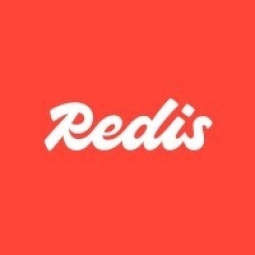技术
- 基础设施即服务 (IaaS) - 云数据库
- 平台即服务 (PaaS) - 应用开发平台
适用行业
- 建筑与基础设施
- 电信
适用功能
- 维护
用例
- 施工管理
- 语音识别
服务
- 云规划/设计/实施服务
- 系统集成
关于客户
Plivo 是一个现代化的全球电信平台,每月为 190 多个国家/地区超过 10 亿个 API 请求提供服务。该公司成立于 2011 年,为依赖语音和消息传递以更有效地与客户互动的企业提供企业级可靠性。 Plivo 是领先的基于云的通信平台 (CPaaS),可帮助企业与客户互动和沟通。他们的服务对企业至关重要,因为他们的语音 API 平台需要低延迟读写。 Plivo 的用例包括在给定时间段内限制呼叫速率、对呼叫状态进行排队以及按区域维护呼叫队列。
挑战
全球电信平台 Plivo 面临着流式微服务架构的挑战。该架构支持大量小型、高频数据写入。但是,如果 Amazon ElastiCache 区域出现故障,它就无法跟上容量的变化并维持跨区域的数据一致性。这给 Plivo 的运营带来了重大风险,因为它可能会扰乱他们的服务并对客户产生负面影响。 Plivo 的工程师意识到他们需要构建自定义故障转移来解决此问题。他们还需要一个能够满足其语音 API 平台性能要求的解决方案,该平台需要低延迟读取和写入。
解决方案
经过测试后,Plivo 选择了 Redis Cloud,因为它可以满足其语音 API 平台的要求。从开源 Redis 背后的公司迁移到托管解决方案几乎不需要更改任何代码,从而使过渡顺利且高效。最初的迁移在几分钟内完成,完整的迁移在一个月内完成。 Active-Active(Redis Enterprise 独有的功能)的使用使 Plivo 能够跨区域优化其服务并最有效地利用其基础设施。该解决方案还为 Plivo 提供了地理分布式数据库,通过 Active-Active Redis 确保了正常运行时间和可扩展性。迁移过程经过仔细规划和执行,并制定了回滚计划,以防出现任何问题。
运营影响
数量效益

Case Study missing?
Start adding your own!
Register with your work email and create a new case study profile for your business.
相关案例.

Case Study
IoT System for Tunnel Construction
The Zenitaka Corporation ('Zenitaka') has two major business areas: its architectural business focuses on structures such as government buildings, office buildings, and commercial facilities, while its civil engineering business is targeted at structures such as tunnels, bridges and dams. Within these areas, there presented two issues that have always persisted in regard to the construction of mountain tunnels. These issues are 'improving safety" and "reducing energy consumption". Mountain tunnels construction requires a massive amount of electricity. This is because there are many kinds of electrical equipment being used day and night, including construction machinery, construction lighting, and ventilating fan. Despite this, the amount of power consumption is generally not tightly managed. In many cases, the exact amount of power consumption is only ascertained when the bill from the power company becomes available. Sometimes, corporations install demand-monitoring equipment to help curb the maximum power demanded. However, even in these cases, the devices only allow the total volume of power consumption to be ascertained, or they may issue warnings to prevent the contracted volume of power from being exceeded. In order to tackle the issue of reducing power consumption, it was first necessary to obtain an accurate breakdown of how much power was being used in each particular area. In other words, we needed to be able to visualize the amount of power being consumed. Safety, was also not being managed very rigorously. Even now, tunnel construction sites often use a 'name label' system for managing entry into the work site. Specifically, red labels with white reverse sides that bear the workers' names on both sides are displayed at the tunnel work site entrance. The workers themselves then flip the name label to the appropriate side when entering or exiting from the work site to indicate whether or not they are working inside the tunnel at any given time. If a worker forgets to flip his or her name label when entering or exiting from the tunnel, management cannot be performed effectively. In order to tackle the challenges mentioned above, Zenitaka decided to build a system that could improve the safety of tunnel construction as well as reduce the amount of power consumed. In other words, this new system would facilitate a clear picture of which workers were working in each location at the mountain tunnel construction site, as well as which processes were being carried out at those respective locations at any given time. The system would maintain the safety of all workers while also carefully controlling the electrical equipment to reduce unnecessary power consumption. Having decided on the concept, our next concern was whether there existed any kind of robust hardware that would not break down at the construction work site, that could move freely in response to changes in the working environment, and that could accurately detect workers and vehicles using radio frequency identification (RFID). Given that this system would involve many components that were new to Zenitaka, we decided to enlist the cooperation of E.I.Sol Co., Ltd. ('E.I.Sol') as our joint development partner, as they had provided us with a highly practical proposal.

Case Study
Splunk Partnership Ties Together Big Data & IoT Services
Splunk was faced with the need to meet emerging customer demands for interfacing IoT projects to its suite of services. The company required an IoT partner that would be able to easily and quickly integrate with its Splunk Enterprise platform, rather than allocating development resources and time to building out an IoT interface and application platform.

Case Study
Bridge monitoring in Hamburg Port
Kattwyk Bridge is used for both rail and road transport, and it has played an important role in the Port of Hamburg since 1973. However, the increasing pressure from traffic requires a monitoring solution. The goal of the project is to assess in real-time the bridge's status and dynamic responses to traffic and lift processes.

Case Study
Bellas Landscaping
Leading landscaping firm serving central Illinois streamlines operations with Samsara’s real-time fleet tracking solution: • 30+ vehicle fleet includes International Terrastar dump trucks and flatbeds, medium- and light-duty pickups from Ford and Chevrolet. Winter fleet includes of snow plows and salters.









